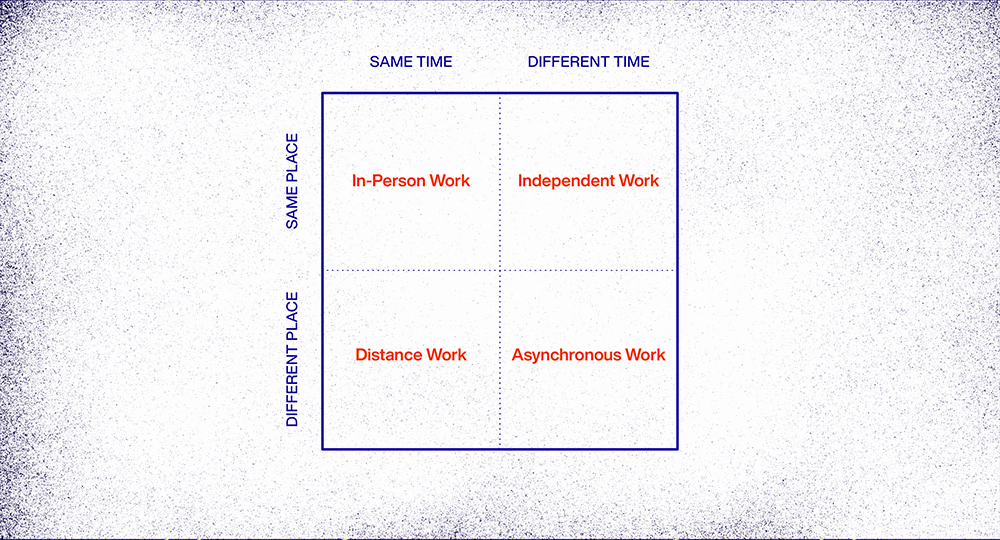In a global health crisis, much is uncertain. What is clear is that the disruption of the global economy is just starting to be felt. It may take years for certain industries to recover, and many will be changed in the process. The office furniture industry is one that appears to be poised for a hard reset.

Many industry players talk about issues beyond furniture – ergonomics, productivity, culture, health, and so on. However, the conversation always comes back to furniture. Manufacturing is the engine that built the industry and continues to drive profitability today. We all know that the landscape is shifting, but change is hard. People resist change. Today, the coronavirus pandemic has led to mandatory stay home orders from governments around the world, forcing workers who can work from home to do so. Office furniture has managed to maintain a monopoly on "work" for decades now. But this may be a tipping point when nascent patterns may reshape how people think about the workplace.
Traditional monopolies have been possible largely due to proximity – think stores, schools, or banks. Digital innovators have been disrupting these patterns by rethinking the model and delivering asynchronous services. Historically, nearly all work happened in an office: same time, same place. Even before recent work-from-home mandates, technology and market innovations were enabling people to think differently about the office. Now we’re being forced to face the reality that a lot of work can happen in different places and at different times.
The monopoly office furniture has had on work continues to erode. If we compare work between same and different times and places, we can identify four work modes: In-Person work, Individual work, Distance work, and Asynchronous work. A traditional physical office may be required in only one of these four scenarios.

In-Person work
In-person work, or traditional office work, is the most dependent on physical space. Being in the same room can be the best way for group collaboration or to have a one-on-one conversation. Please come in and close the door. Look someone in the eye. Technology is making this more possible to do this remotely, but hardly anyone would argue that a face-to-face meeting isn’t the best way for some types of personal exchanges.
A big question for office furniture makers becomes: What kind of work really needs to be done in this mode? What is the requirement for this work? How much open space? How much privacy? Today, manufacturers celebrate the need for a variety of workspaces to accommodate varied user preferences and use cases. The idea is to let people choose where they want to work and let them float around. This makes sense except that you’re building in excess capacity by design – not all spaces will be fully utilized at any given time. How much couch time will be needed? Cost and space utilization studies will lead to decreasing the overall footprint, so not everyone will be able to fit in the building all at once. Workers who float may drift even farther.
Individual work
Heads-down individual work is what happens when you need to get away from distractions. In an office, you’d close the door. What does it take for someone to really concentrate? It’s more an issue for psychology than furniture, which is why books about modes for thinking and habits have come to the forefront. While technology has empowered some individual work, the huge volume of notifications from email, chats, texts, messaging services, phones, wearables, and desktops have led to the emergence of technological snooze buttons on all major platforms.
What furniture is needed for individual work may be less a mystery than where it’s located. The wobbly rise of WeWork and the broader emergence of shared spaces is shaping the office ownership landscape. It’s also creating new user expectations for an even greater diversity of workspaces, but those places still need furniture. A question for furniture makers will be where people go for individual work. It will be in offices to some degree, but also co-working spaces, coffee shops, airports, hotel rooms, and homes. We might ask ourselves: Where else do we find people in a corner trying to get some work done?
Distance work
Business travelers are used to working from a distance already. Road warriors come to rely on office-like necessities – wifi on the airplane, airline clubs, hotels with lobbies that double as collaborative spaces, a desk in the room with power, or a phone charger at the bar.
Technology continues to offer alternatives for communication, sharing, and co-creation. This isn’t new – Microsoft Office is 30 years old. However, as the web infrastructure and technology tools have matured, growing players like Zoom and Slack continue to catch on. The new WFH environment has made video conferencing a reality for millions of workers and messaging services have become the lifeblood of many teams. Today’s indispensable smartphone enables instant communication worldwide.
Distance work today is enabled by technology more than furniture. Still, it’s important to recognize that technology is simply what we call something invented since we were born. People under 30 don’t see smartphones or even the internet as technology at all – like a microwave oven, it’s just stuff they use. For many young people, new technology has yet to emerge. If we really aim to support work, not just furniture, how might we innovate differently?
Asynchronous work
The remote work revolution has been underway for several years. Asynchronous work has been championed by technology firms like Automattic (which makes Wordpress, the platform that runs a large percentage of all websites) and Basecamp (an early SaaS pioneer and profit beacon), but there are many who remain unconvinced. There’s even been a kind of backlash. High-profile organizations like IBM have recalled their remote workers based on arguments that closer proximity yields better ideas and productivity.
Furniture companies have been targeting home office furniture and remote patterns for decades, but even so, the dust has not yet settled on how to balance the opportunity and challenge of working remotely. Companies may have to pivot. After a month or two at home, even remote work skeptics will have started new habits that may stick. Companies like Asana, which evangelize asynchronous work and build tools to support it, will continue to grow. What work products will people use at home, and where will they get them?
Today’s crisis is disruptive, but it may be accelerating changes already underway. In-person, individual, distance, or asynchronous, it’s likely that among the lasting effects of the coronavirus pandemic will be a change in expectations of how work gets done. Disruption creates opportunity, but that doesn’t make the future any more obvious. If the office furniture industry experiences a hard reset, there will be winners and losers. What we do know is that managers manage the known; leaders manage the unknown.
Leaders decide which problems to solve. Furniture has more to offer than supporting work, and work is only partly supported by furniture. The office furniture problem to solve today is how to navigate the changing relationship between furniture and work.